Yesterday, I received a parcel from an old and dear friend, 李美 (lǐ měi), who uses the English name, Vera. It was a large box of dried mushrooms, but not any old mushrooms. These are rather special. I’d heard rumours that they existed, but had never been able to track them down.
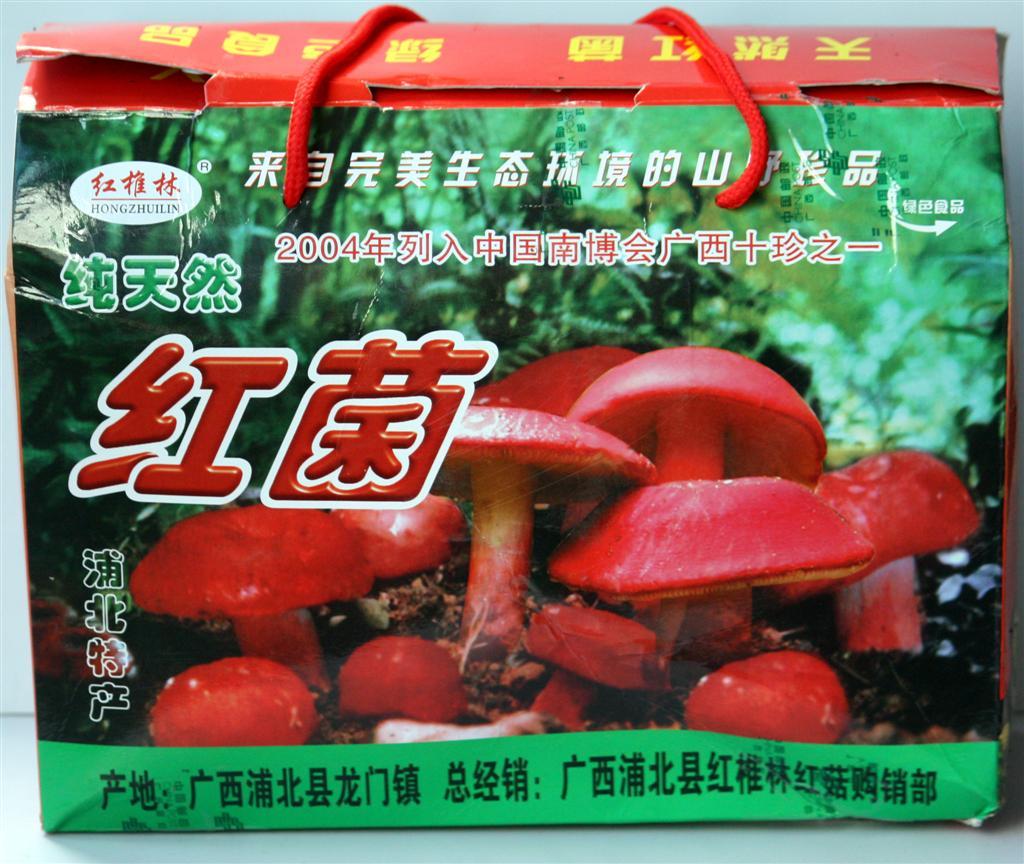
The hongzhui tree, 红椎树 (hóng zhuī shù, literally ‘red vertebrae tree’) (Castanopsis hystrix) is a subtropical species of evergreen broadleaf tree, which grows up to 30 meters in height. It is found in the eastern Himalayas of Nepal, Bhutan, and north-eastern India, across Indochina (Cambodia, Laos, Myanmar, Thailand, Vietnam), southern China (Fujian, Guangdong, Guangxi, Guizhou, Hainan, south-western Hunan, south-eastern Tibet, and southern Yunnan), and Taiwan.
In a few areas of China, particularly Guangxi, but also Fujian and Guangdong, the hongzhui forests are home to a unique species of red mushroom. These are named after the trees and so are hongzhui mushrooms – 红椎菌 (hóng zhuī jūn).
Hongzhui mushrooms are found in the mountainous areas from May to August when it is both hot and wet. They grow under the shadow of the hongzhui trees, which also bear edible fruit similar to chestnuts but smaller.
Hongzhui mushrooms have so far resisted all attempts to grow them commercially, so they are all picked from the wild.
Pubei County in Qinzhou on the southern coast of Guangxi contains the largest area of hongzhui forests and the town of Longmen is the centre of the mushroom picking area.
My friend Vera writes:
“I was born in a village of Longmen town, the major growing area of hongzhui mushrooms. Around the town, we have the most red fungi in the area. Picking them from the hills behind my old house is a very good, funny and happy memory from my childhood. We got up at dawn or even earlier, took a basket and started our journey. And we would also do it right after a sudden rain in the afternoon. There would be a good harvest. When walking in the wild, we had to be careful, otherwise we would suffer from being attacked by hornets or get itchy because of worms. I suffered many times but I enjoyed seeing the red “babies”. Because they could help earn money to pay for my school tuition.
We moved to town when I was 12 years old. I have never had such an experience again since then”
The amount of hongzhui mushrooms picked is decreasing year by year due to environmental and climate changes. These mushrooms are much more rare than wild matsutake mushrooms but they are easier to take care of as they do not decay so rapidly.
They are normally sun dried, but in inclement weather over hot wood or coals. They are also eaten fresh, but fresh hongzhui mushrooms are only found local to their picking grounds. A trip is planned for the new season next year.
Here is a video (in Chinese) showing the mushrooms being picked then dried.
They are used with chicken, ribs, fish and with pig stomach, both in main dishes and in soups. It is said that they taste better when ginger and rice wine is used, but Vera prefers them plain so that she can get the full, natural taste.
Hongzhui mushrooms come in up to four grades. Nutritionally, there is no difference. Rather they are graded by appearance and texture. Prices vary from 170 – 400 yuan per 500g. (US$27 - $63, UK£17 - £39).
So here they are:
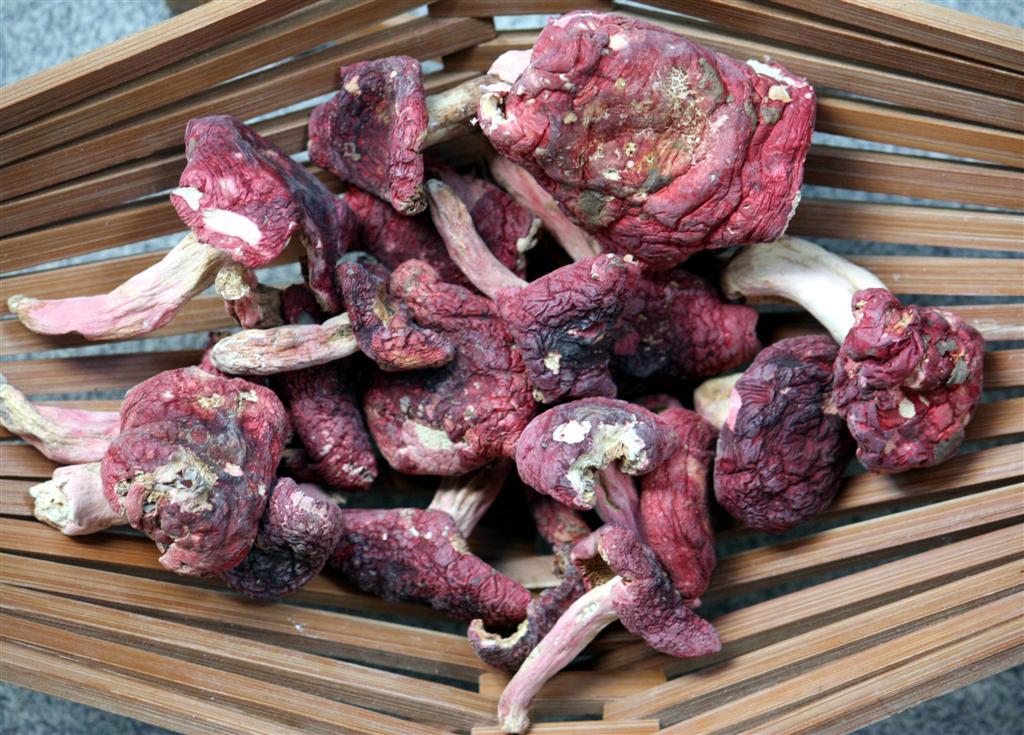

Opening the bag released a strong mushroom scent. Almost overpowering. The whole room smells of mushrooms!
As an experiment, I set four specimens to soak. The water immediately turned pink and after five minutes was distinctly red.
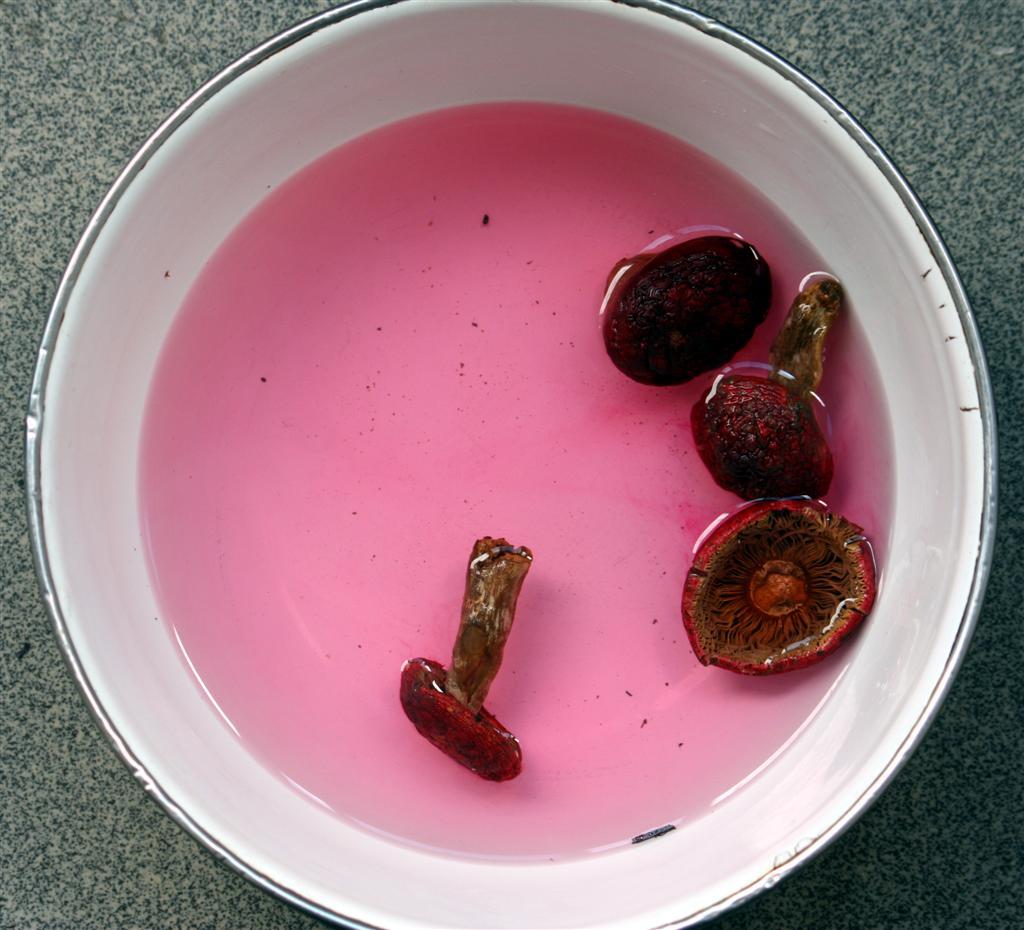
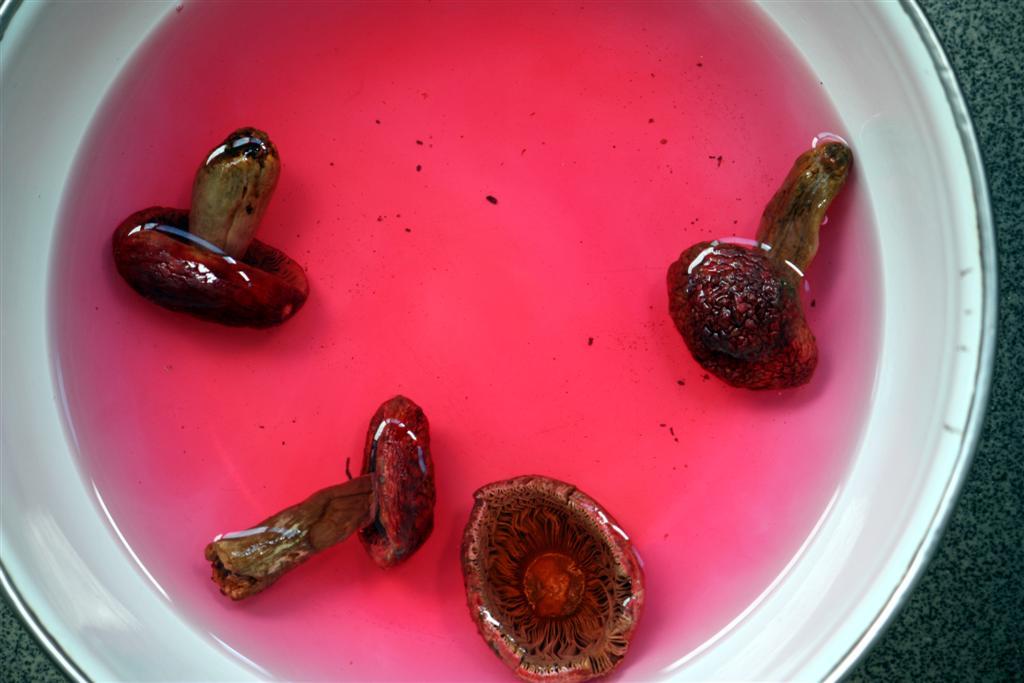
Here are the reconstituted mushrooms
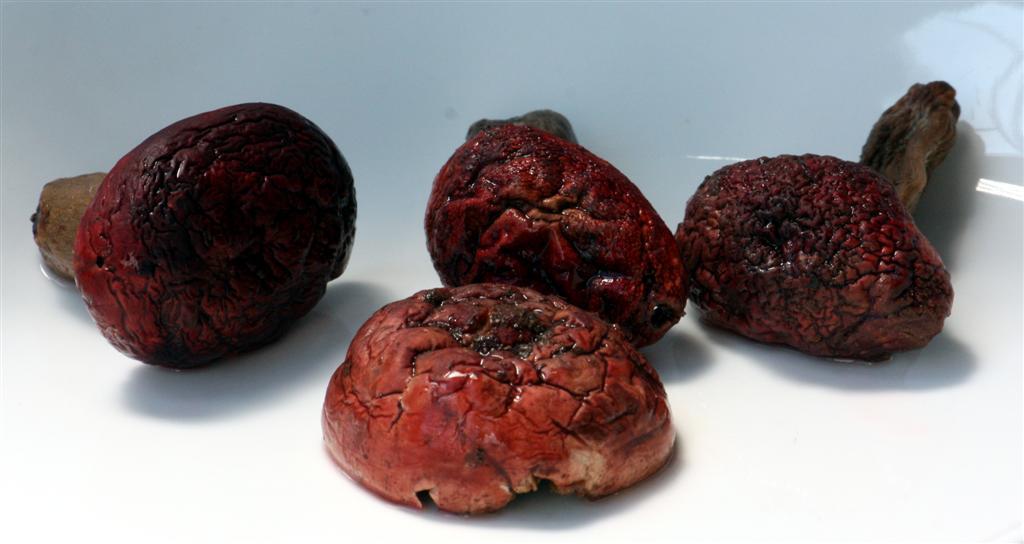
Following Vera's suggestion and continuing my experiment, I used these four babies in a simple chicken soup, minimally flavoured with a bit of ginger and salt. Of course, I strained and added the soaking liquid, too. The red soaking liquid was diluted by the chicken stock giving me a nice pink soup.
The mushrooms remained firm to the bite and tasted slightly sweet and somewhat nutty. They certainly went well with the chicken. More experiments shall follow.
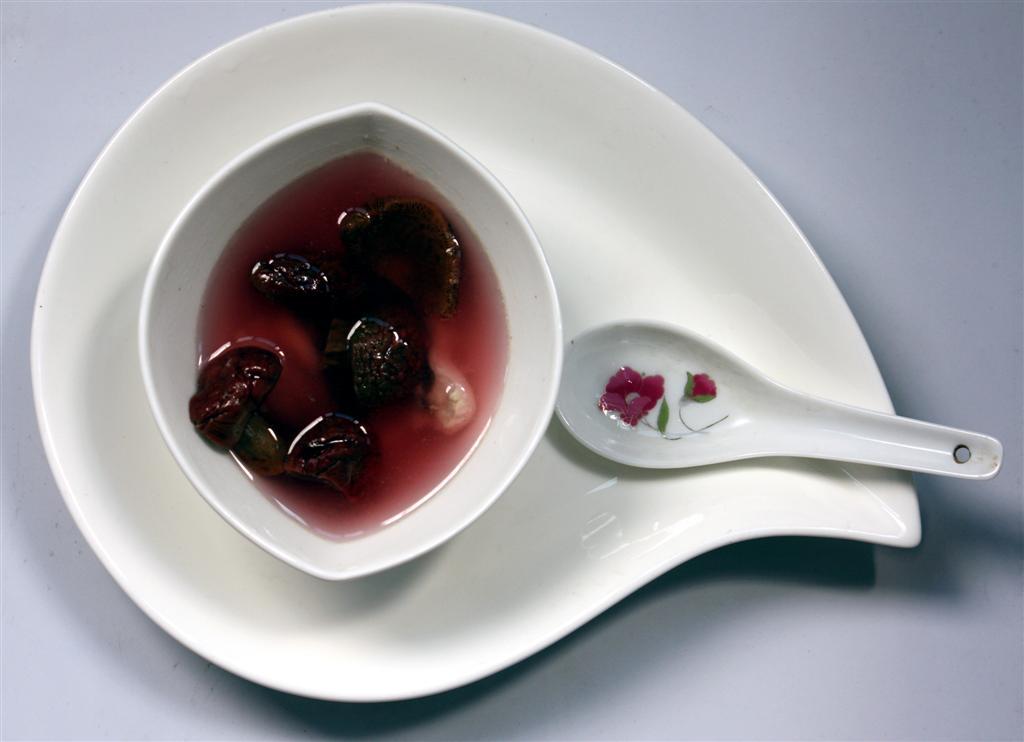
Thank you 李美!









